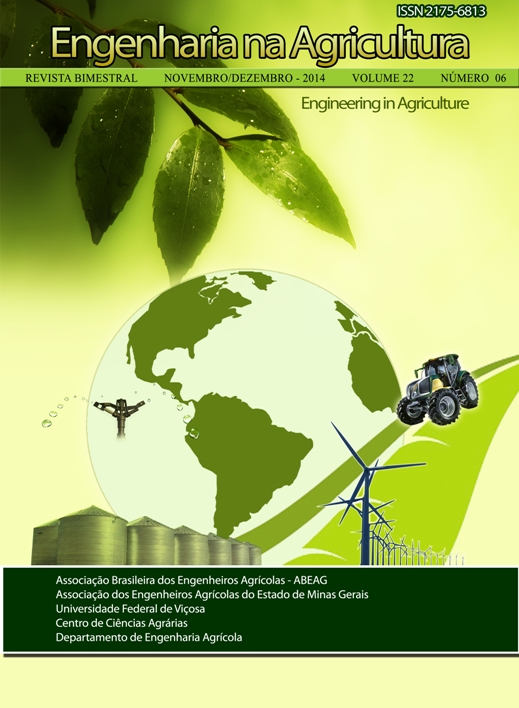QUALITY OF MINIMALLY PROCESSED SWEET CORN KEPT UNDER DIFFERENT ATMOSPHERES - DOI: 10.13083/1414-3984.v22n06a03
DOI:
https://doi.org/10.13083/reveng.v22i6.583Keywords:
Zea mays, atmosfera controlada, qualidade, pós-colheita, processamento mínimoAbstract
The purpose of this work is to evaluate the use of three different atmospheres (2% O2 + 8% CO2, 4%O2 + 8% CO2 and normal atmosphere) on the quality of minimally processed sweet corn during its conversation at 5°C for nine days. Ears of sweet corn were used of the hybrid of the breeding program of Embrapa Corn and Sorghum with mutant gene sh2 (Embrapa HT1). The contents of glucose, fructose, ?-cryptoxanthine, firmness and L* value were influenced only by the storage time. The controlled atmospheres were efficient to reduce the mass loss of the sweet corn ears and from the results obtained for pH and titratable acidity, to maintain the respiratory activity reduced until three days of storage. Higher contents of sucrose in the stored sweet corn ears under normal atmosphere can indicate faster degeneration of starch and more disponibility for respiration. In general, the use of controlled atmosphere did not influence the total carotenoids content. The atmosphere of 2% O2 and 8% CO2 showed higher values of b* and firmness. All minimally processed sweet corn samples analyzed, independent of the conservation atmospheres, were within the acceptable microbiologic limits specified by legislation. Nevertheless the atmosphere of 2% O2 and 8% CO2 presented lower populations of coliforms at 35 °C, psychotrophic aerobic bacteria and filamentous fungi and yeasts. Thus, it is the most indicated atmosphere for post-harvest conservation of minimally processed sweet corns during 9 days.Downloads
Downloads
Published
How to Cite
Issue
Section
License
Authors who publish with this journal agree to the following terms:
The author(s) authorize(s) the publication of the text in the journal;
The author(s) ensure(s) that the contribution is original and unpublished and that it is not in the process of evaluation by another journal;
The journal is not responsible for the views, ideas and concepts presented in articles, and these are the sole responsibility of the author(s);
The publishers reserve the right to make textual adjustments and adapt texts to meet with publication standards.
From submission, the author is fully conceding the paper's patrimonial rights to the publication, but retaining the owner of its moral rights (authorship and paper's identification) according to Creative Commons Attribution-Noncommercial.








 Licensed by
Licensed by 